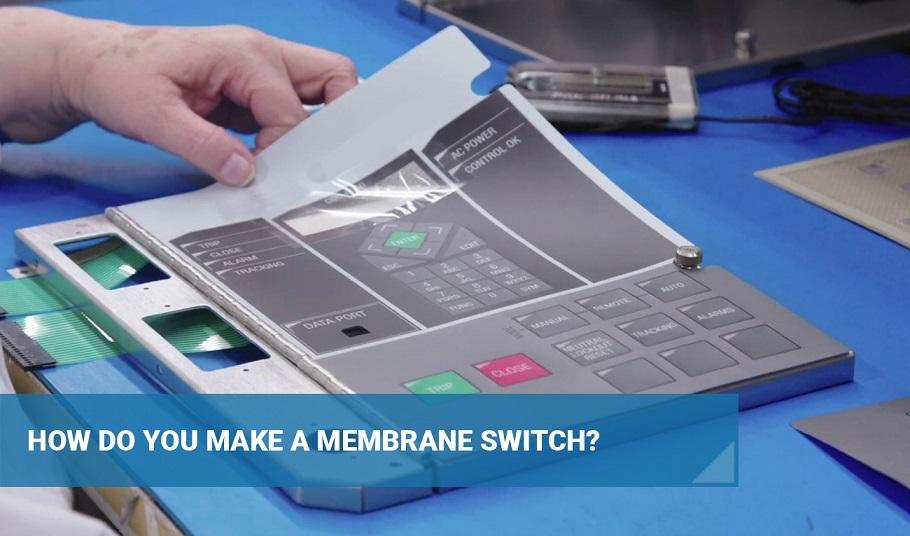The Complete Overview to Membrane Switch Innovation and Its Applications
The Complete Overview to Membrane Switch Innovation and Its Applications
Blog Article
Comprehending the Functionality of Membrane Layer Changes for Interface Gadget
The performance of membrane switches over represents a considerable advancement in individual interface design, integrating performance with visual adaptability. As industries progressively prioritize customer experience, understanding the subtleties of membrane button technology comes to be vital.
What Are Membrane Layer Switches?
Membrane buttons are cutting-edge interface devices that facilitate user interaction with digital devices. These versatile parts consist of multiple layers, including a graphic overlay, spacer, and a published circuit layer. The layout permits a seamless assimilation right into different electronic devices, boosting both the aesthetic and useful elements of interface.
Membrane layer buttons are generally employed in a vast array of applications, from home home appliances to commercial machinery and medical tools. Their building and construction commonly features a slim account, making them a perfect option for portable styles. The responsive feedback provided by these switches can be crafted to meet particular user choices, making sure efficient interaction in between the user and the tool.
Sturdiness is an additional substantial benefit of membrane layer switches, as they are resistant to dirt, dampness, and chemicals, which improves their life-span sought after environments. Furthermore, these switches can be personalized in terms of form, size, and graphic style, permitting branding and user-specific features. In general, membrane changes represent a sensible remedy for improving user experience in digital gadgets, integrating functionality with visual allure in a reliable fashion.
Exactly How Membrane Changes Work
Operating on a simple principle, membrane changes make use of a split building and construction to sign up user input properly. Each switch contains multiple layers, consisting of a printed circuit layer, a spacer layer, and a top visuals layer, which are designed to interact flawlessly. When a user presses the leading layer, it presses the spacer layer, bringing the conductive elements of the circuit layer right into call with each other.
This call produces a closed circuit, signaling the gadget to execute a particular feature. The layout permits for various setups, including responsive comments, which can enhance the user experience by providing a physical feeling upon activation. The products utilized in membrane switches typically consist of versatile substrates, such as polyester or polycarbonate, which ensure resilience and resilience versus wear and tear.

Trick Benefits of Membrane Layer Switches

Another substantial benefit is their compactness. Membrane layer buttons are slim and light-weight, which makes it possible for makers to save space in their tools without compromising performance. This feature is particularly useful in applications where weight and quantity are vital considerations.
In addition, membrane buttons are immune to dust, wetness, and chemicals, enhancing their toughness. This resilience expands their life-span and lowers the requirement for constant substitutes, causing cost financial savings with time.
Furthermore, the tactile feedback supplied by membrane layer buttons can be maximized to improve individual interaction. They can consist of attributes such as increased buttons or audible clicks, improving functionality and individual experience.
Applications Throughout Industries
Interface devices using membrane layer switches are prevalent in a broad range of markets, showcasing their flexibility and capability. Membrane Switch. In the medical sector, membrane layer switches are indispensable to tools such as analysis equipment and person surveillance systems, where their sturdiness and simplicity of cleaning are important for preserving hygiene requirements. In the auto industry, these switches are used in dashboard controls and infotainment systems, giving a smooth and contemporary user interface for users.
Moreover, the customer electronic devices market gain from membrane switches in home appliances and portable tools, where compact style and easy to use interfaces enhance customer experience. Industrial applications likewise leverage membrane switches for control panels in equipment and automation systems, emphasizing their effectiveness and resistance to rough environments.
In the aerospace and defense industries, membrane layer buttons are utilized in cabin controls and devices, where dependability and performance under severe problems are extremely important. Additionally, the click pc gaming sector progressively includes membrane layer buttons in controllers and game devices, adding to an interesting user experience. Generally, the convenience of membrane switches over allows their extensive usage throughout countless fields, highlighting their value in contemporary interface design.
Future Fads in Membrane Change Modern Technology

Additionally, using innovative products, such as polycarbonate and polyester movies, is anticipated to increase, giving boosted longevity and resistance to ecological stressors. These products add to the general longevity of membrane find out this here buttons, making them ideal for harsher commercial applications.
Additionally, the unification of wise technology, consisting of IoT connectivity, will make it possible for membrane layer switches to connect with other devices and systems, helping with an extra interactive user experience. This fad lines up with the expanding demand for wise tools throughout numerous sectors, from medical care to customer electronics.
Last but not least, personalization choices are prepared for to expand, permitting manufacturers to develop bespoke services tailored to details individual needs and choices. These developments will position membrane layer buttons as crucial parts in the evolution of interface innovation.
Verdict
In verdict, membrane layer switches stand for a crucial advancement in user interface technology, providing a dependable and flexible service for diverse electronic applications. As improvements in product science and touch picking up modern technologies proceed, the performance and applicability of membrane layer switches are expected to broaden, enhancing their importance in modern electronic gadgets.
Report this page